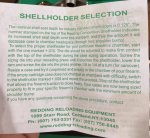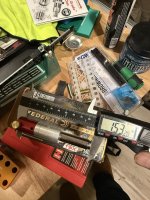The OP was comparing datum numbers to the saami print, which uses a .4” datum. It’s understandable why he chose the .4 insert. Problem is it’s a low buck comparator, and not a gauge. Why Hornady, the designers of the cartridge itself and the comparator set decided to recommend the .375 datum, is anyone’s guess. If you put a .375 on, it doesn’t fix anything, just gives you a bigger number, and naturally it doesn’t match the print either.
i use what is recommended and haven't run into any issues, yet.
forster make a really nice datum line comparator and might of helped the OP better measure.
i'm sure there is a better mouse trap out there if one wants to spend up big. yes the hornady isn't the most expensive but it does work, maybe not how the OP wanted it to.
sometimes things are better left under-thought instead of over-thought when it works.



